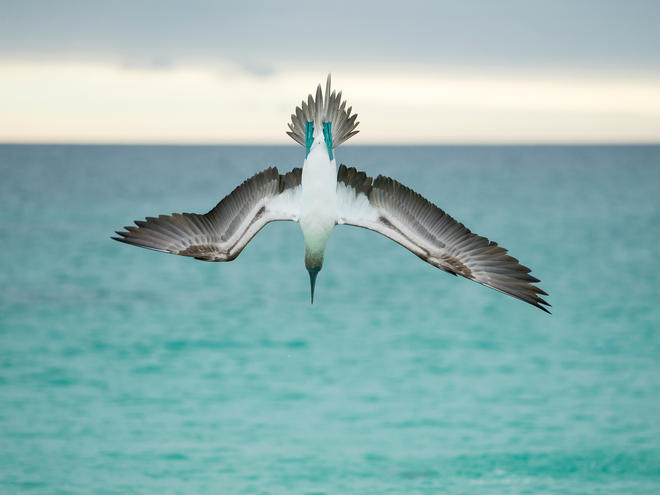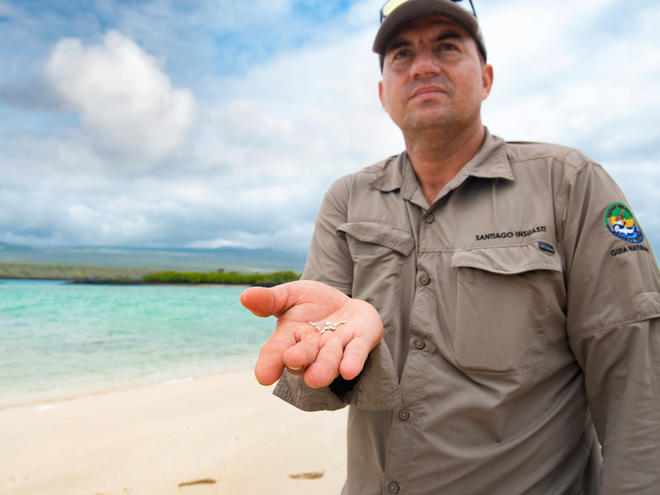

In an oceanside laboratory at the Charles Darwin Research Foundation in the Galapagos, Tomas Hannam-Penfold sits bent over a microscope, surrounded by bags of plastic trash scavenged from nearby beaches. He places a small white fragment on the illuminated petri dish and gestures for me to peer through the eyepiece. The piece of plastic is covered with tiny spirals: the egg cases of a type of marine worm.
Plastic trash is already an issue for the Galapagos. Now scientists like Hannam-Penfold are looking at the impact of invasive species floating in on a soda bottle. Although this particular marine worm is already a resident of the islands, he has also found a gooseneck barnacle that has never been reported here. The introduction of any new species, even a microscopic one, is a significant concern in the conservation of the Galapagos.
Around the world, humans produce an estimated 1.3 billion tons of plastic waste, a number is set to increase to 2.2 billion by 2025. In countries such as Ecuador that have limited garbage collection services, some of this plastic waste inevitably ends up back in the oceans or on beaches, where it has the potential to harm wildlife and human health. It’s an issue that WWF, local community and other partners are confronting head-on in the Galapagos.
“When you are younger, you want to conserve turtles,” biologist Mario Piu says with a smile, “When you get old, you have a bigger vision.”
The bigger vision Piu is talking about are the mountains of plastic sent down a conveyer belt behind him. As the head of Environmental Management for the local government of Santa Cruz Island, the largest community in the Galapagos, he’s in charge of this landmark integrated solid waste management and recycling system that WWF helped implement with the Municipal Government of Santa Cruz. The implementation started in 2006 and has expanded since then. Today, more than 50% of the overall waste, including recycle and organic materials, generated in Santa Cruz island are being recycled. “We can avoid pollution of our seas if we improve waste management on land,” he says.
Piu, who became concerned about plastics after leading beach cleanups in the 1990s, says that the next step is to prevent plastic products from getting to the Galapagos Islands in the first place. A recent law bans the distribution or commercialization of plastic drinking straws, disposable plastic shopping bags, styrofoam food containers and dinnerware, and non-returnable bottles of sodas and beers on the islands, though those products are unevenly used.
The Galapagos Governing Council, WWF, and other partners have been spreading the word about the law through an information campaign that involves signs at local airports, piers, and outreach to stores and restaurants. Starting in 2019, the Coca-Cola Company and Tesalia-PepsiCo, among other companies, have agreed to produce a new line of returnable bottles just for the Galapagos.
The people of the Galapagos are doing their part to protect their islands and address this global problem too. Local communities and activists have mobilized to institute coastal cleanups and awareness campaigns about plastic use.
But Hannam-Penfold — the researcher — isn’t particularly worried about running out of material to study in the future. After all, the largest amount of plastic waste arrives in the Galapagos on ocean currents from places that have yet to learn these same lessons.
Published October 24, 2018 at 05:00AM
No comments:
Post a Comment